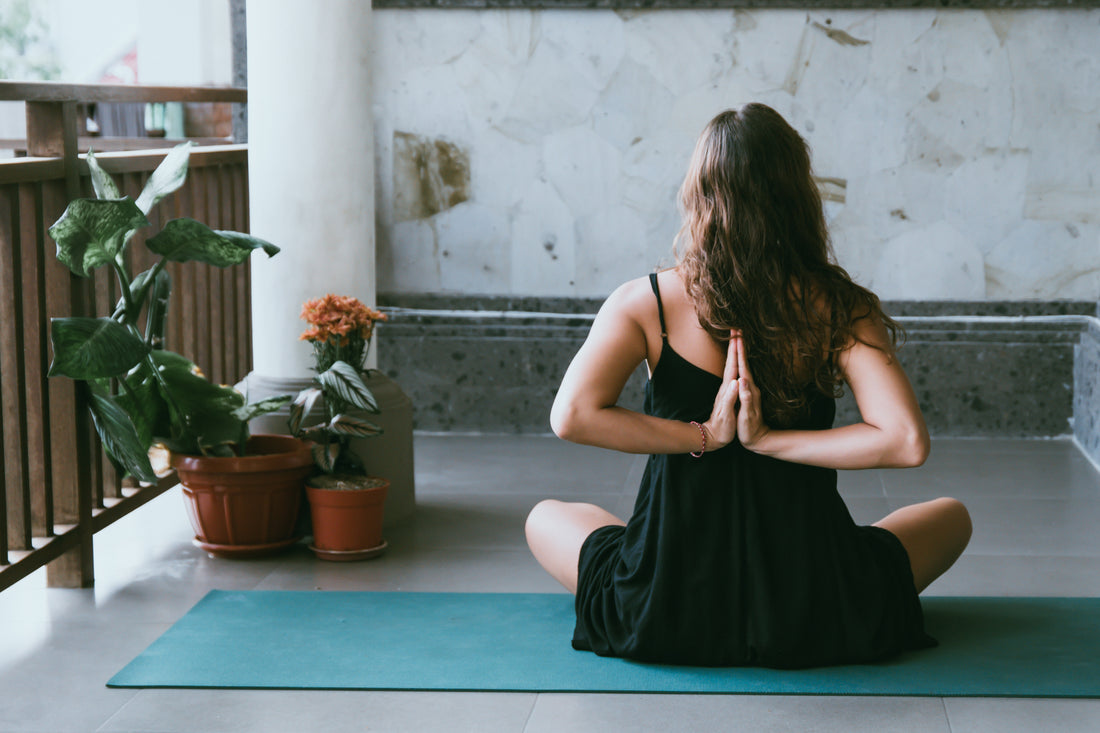Meditation
This month, we are moving away from the asanas and taking a closer look at the art of gazing inwards.
The whole purpose behind yoga is to train our body and mind to sit in meditation in order to reach samadhi (nirvana)
Meditation is a very personal and unique journey for each person. There is no good or bad way to meditate. Here are a few guidelines to help get into a state of meditation.
Indications:
- Sit in a comfortable seated crossed leg position using a meditation cushion, yoga block or blanket. This support will stabilize your posture and lengthen your spine for optimal breath and energy flow.
- Close your eyes and rest your hands on your knees or place your fingers in Gyan Mudra (Index and thumb touching)
- As much as possible, try to sit in the same posture, at the same time and place. This will allow your subconscious to associate that time and place with meditation which will help you reach a meditative state more efficiently.
- The best time to meditate is early morning or before bedtime. See what time fits best in your schedule and include it in your daily routine. Start by sessions of 15 minutes and gradually increase the time.
- Relax the body and consciously scan the whole body from head to toe.
- Bring awareness to the breath and energy (prana) moving through the body.
- Chant mantra OM 5-10 times. Chanting OM helps you reach a meditative state and deep relaxation. The vibrations of the mantra allows the energy to flow throughout the body and brings concentration to help you meditate without distractions.
- Clear your mind of all thoughts, being mindful of what is happening inside and outside at this specific moment.
- If your mind wanders, bring back your attention to your breath.
- Finish by rubbing your palms together and apply them on your closed eyes. Open your eyes under your palms and release your hands slowly.
Variations:
There are many different meditation techniques. Find the technique that works for you and always use the same in order to go deeper into meditation.
If you cannot sit for a long period of time, you can meditate standing or lying down. No matter the position, make sure that your spine is long and straight.
Benefits:
While the practice has been around for a millennia, meditation has recently emerged as a popular approach to regulating both physical and mental wellbeing.
Physical Benefits:
- Stress Reduction
According to a 2013 study by the journal Health Psychology, the practice of meditation was shown to have an impact on the reduction of cortisol. - Increases serotonin production that improves mood and behavior
- Lower Blood Pressure
Meditation can help normalize blood pressure because of what’s called the “relaxation response,” which helps produce more of the compound nitric oxide. Nitric oxide helps blood vessels open up which then helps reduce blood pressure. - Increased Immunity
According to researchers at the Infanta Cristina Hospital in Spain, meditation, was shown to increase the level of cells in our blood that fight off viruses and bacteria. - Decreases tension-related pain, such as, tension headaches, ulcers, insomnia, muscle and joint problems
- Brain Development
Studies have come out linking meditation with an increase in cortical thickness, an increase in grey matter in both the hippocampus and frontal areas, and an overall increase in brain volume.
Mental Benefits:
- Decreases anxiety
- Improves emotional stability
- Increases creativity
- Increases happiness
- Develops intuition
- Mental clarity and focus
- Increases mental awareness
Contra-indications:
- Avoid meditating in direct sunlight
- Avoid meditating in hot or cold temperature, the body needs to be comfortable for the mind to focus.
- Meditate in a calm and clean environment away from distractions
The post Meditation – Living in the moment appeared first on Little Life Blog.


